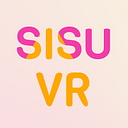Previously, we compared traditional training (e.g., PC-based, live lectures) to immersive learning using virtual reality (VR) technology. Specifically, immersive solutions can offer organizations a wide range of benefits, from enhanced employee engagement to improved safety.
But what are the specific features of immersive training that will maximize employee learning? In this article, we will explore the various features of immersive learning as well as the benefits that each feature provides.
- Immersivity
Immersive simulations can educate employees on how to respond to real-life situations. Simulations grounded on realistic incidents or cases allow employees to experience “what it would feel like” to be in the midst of a difficult moment or crisis.
By tailoring simulations toward specific organizational needs, companies can provide relevant training on necessary subjects. For instance, training can simulate common workplace activity, such as handling customer service scenarios or difficult conversations.
Using immersive simulations, employees can learn diverse operational protocols, helping them develop proficiency and confidence in their skills.
For example, 360-degree simulations can be used to teach employees how to respond to an active shooter event or how to properly evacuate a building during a fire. Realistic simulations enable employees to perform difficult tasks, such as operating heavy machinery, without needing to worry about the risks associated with the aforementioned scenarios occurring in real life.
2. Gamification
Gamification is a notable feature of immersive learning. Gamifying an educational experience can make it more engaging and enjoyable. Using elements derived from video games, such as accumulating points, earning rewards, and achieving leaderboard status, gamified learning helps to teach complex or tedious subject matter.
By promoting friendly competition and conferring rewards for overcoming challenges, employees can have fun while also learning about something new.
Finally, gamification can be used to promote teamwork and collaboration. For example, a team-building event can be turned into a VR simulation where employees must work together to “escape a room.” Furthermore, remote employees from across the globe can connect and meet to play a round of metaverse mini-golf. By promoting teamwork and collaboration, companies can build strong and cohesive teams that work well together.
3. Interactivity
Interactivity is another key element of immersive learning. By providing interactive experiences, employees can engage with the material in a way that is more memorable and effective than traditional training methods. For example, an onboarding application can leverage VR to help a new employee associate corporate references or terminology with 3D objects within their digital environment. Through interactive exercises, employees can also receive real-time feedback on their actions or performance.
Moreover, interactivity can help employees develop their problem-solving skills.
By presenting employees with challenges and allowing them to experiment with different solutions, companies can help employees to develop a critical thinking and problem-solving mindset.
Similarly, interactivity can provide employees with a sense of autonomy and control. By allowing employees to customize their experience or choose from multiple pathways, companies can facilitate personalized learning experiences.
4. Data Visualization
Data visualization is the use of visual aids to represent complex data. By presenting data in an easily digestible format, immersive learning can empower employees to better understand and analyze information. For example, an operations team can use a VR dashboard to simulate global facility locations and identify which facilities may be having challenges. As a result, employees can more efficiently analyze information and make informed decisions.
Furthermore, immersive simulations can also be used to identify data trends and patterns. For example, a company can use VR to create a 3D heat map of customer data, allowing them to visualize areas with the most customers.
Immersivity, interactivity, gamification, and data visualization are all key elements of immersive learning. From enhanced employee engagement to improved safety, immersive training solutions offer businesses an immense range of benefits.
Although many other aspects make immersive learning a choice method for employers, we wanted to highlight how VR training can equip employees with an understanding of how to address misconduct or harassment. Not only can VR training help employees experience different perspectives (e.g., victim, observer) but it can also help them learn how to speak up in a trying moment and practice effective communication with in-simulation characters. If you’re interested in learning more, feel free to contact us.
By leveraging VR training, businesses can ensure their employees are properly trained and equipped to handle workplace challenges. As the technology to support immersive learning continues to progress, we look forward to seeing how immersive learning will further transform workplaces 💎
